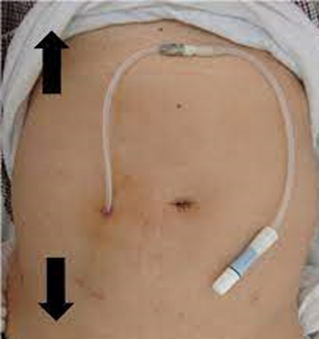A nurse is contributing to the plan of care for a client who has AIDS and has malnutrition. Which of the following actions should the nurse include in the plan of care?
Encourage three large meals daily.
Administer an antiemetic after each meal.
Season foods with spices.
Provide a high-calorie diet.
The Correct Answer is D
Choice A Reason:
Encouraging three large meals daily might not be feasible for someone experiencing malnutrition and decreased appetite. Smaller, more frequent meals or snacks throughout the day could be better tolerated and more beneficial.
Choice B Reason:
Administering an antiemetic after each meal assumes that the client will experience nausea or vomiting regularly after eating. This might not be the case for all clients with AIDS and may not be necessary if the primary issue is malnutrition without associated frequent vomiting.
Choice C Reason:
Seasoning foods with spices might improve the taste of food and potentially stimulate appetite, but it's not as direct or comprehensive a measure for addressing malnutrition as providing a high-calorie diet.
Choice D Reason:
Provide a high-calorie diet is correct. Clients with AIDS often experience malnutrition due to various factors such as decreased appetite, difficulty eating, or malabsorption. Offering a high-calorie diet can help address nutritional deficiencies and support the body's increased energy needs.
Nursing Test Bank
Naxlex Comprehensive Predictor Exams
Related Questions
Correct Answer is C
Explanation
Choice A Reason:
Experiences nocturia is incorrect. Nocturia (waking up at night to urinate) is a common symptom and, while it's important to address for the client's comfort and potential underlying causes, it doesn't pose an immediate risk to the client's roommate or necessitate urgent intervention in a shared room setting.
Choice B Reason:
History of generalized anxiety disorder is incorrect. A history of generalized anxiety disorder is relevant to the client's mental health and overall care. However, in the context of a shared room, it might not require immediate attention or interventions that directly impact the roommate's health or safety.
Choice C Reason:
Recent exposure to tuberculosis is correct. Tuberculosis (TB) is an infectious disease that spreads through the air when an infected person coughs or sneezes. In a shared room, a history of recent exposure to TB is a significant concern as it poses a potential risk to both the client and the roommate. Immediate measures to prevent transmission and ensure proper isolation protocols are necessary to protect the health of both individuals in the shared space.
Choice D Reason:
Reports periodic migraine headaches is correct.
Periodic migraine headaches are a health concern for the client experiencing them, but they typically do not pose an immediate risk or concern for the client's roommate. While addressing pain management is important, it might not require immediate action in the shared room environment.
Correct Answer is C
Explanation
Choice A Reason:
Chill the dialysate prior to infusion. Generally, the dialysate used in peritoneal dialysis is warmed to body temperature before infusion to enhance comfort and prevent abdominal discomfort. Chilling the dialysate can cause discomfort and is not a standard practice in peritoneal dialysis.
Choice B Reason:
Monitor the client for diarrhea. While gastrointestinal symptoms might occur in some individuals undergoing peritoneal dialysis due to changes in fluid balance, diarrhea is not a typical or expected outcome. However, monitoring for any unusual gastrointestinal symptoms or changes in bowel habits is part of holistic client care.
Choice C Reason:
Weigh the client before and after the treatment. Weighing the client before and after peritoneal dialysis is a critical step to assess the effectiveness of the treatment. The difference in weight helps determine how much fluid was removed during the dialysis process, providing valuable information about the treatment's efficacy and the client's fluid status.
Choice D Reason:
Use clean gloves when handling dialysate bags. Maintaining aseptic technique during peritoneal dialysis is crucial to prevent infections. The use of clean gloves (not sterile gloves, unless otherwise specified) when handling dialysate bags helps minimize the risk of contamination, ensuring the safety of the procedure.

Whether you are a student looking to ace your exams or a practicing nurse seeking to enhance your expertise , our nursing education contents will empower you with the confidence and competence to make a difference in the lives of patients and become a respected leader in the healthcare field.
Visit Naxlex, invest in your future and unlock endless possibilities with our unparalleled nursing education contents today
Report Wrong Answer on the Current Question
Do you disagree with the answer? If yes, what is your expected answer? Explain.
Kindly be descriptive with the issue you are facing.
